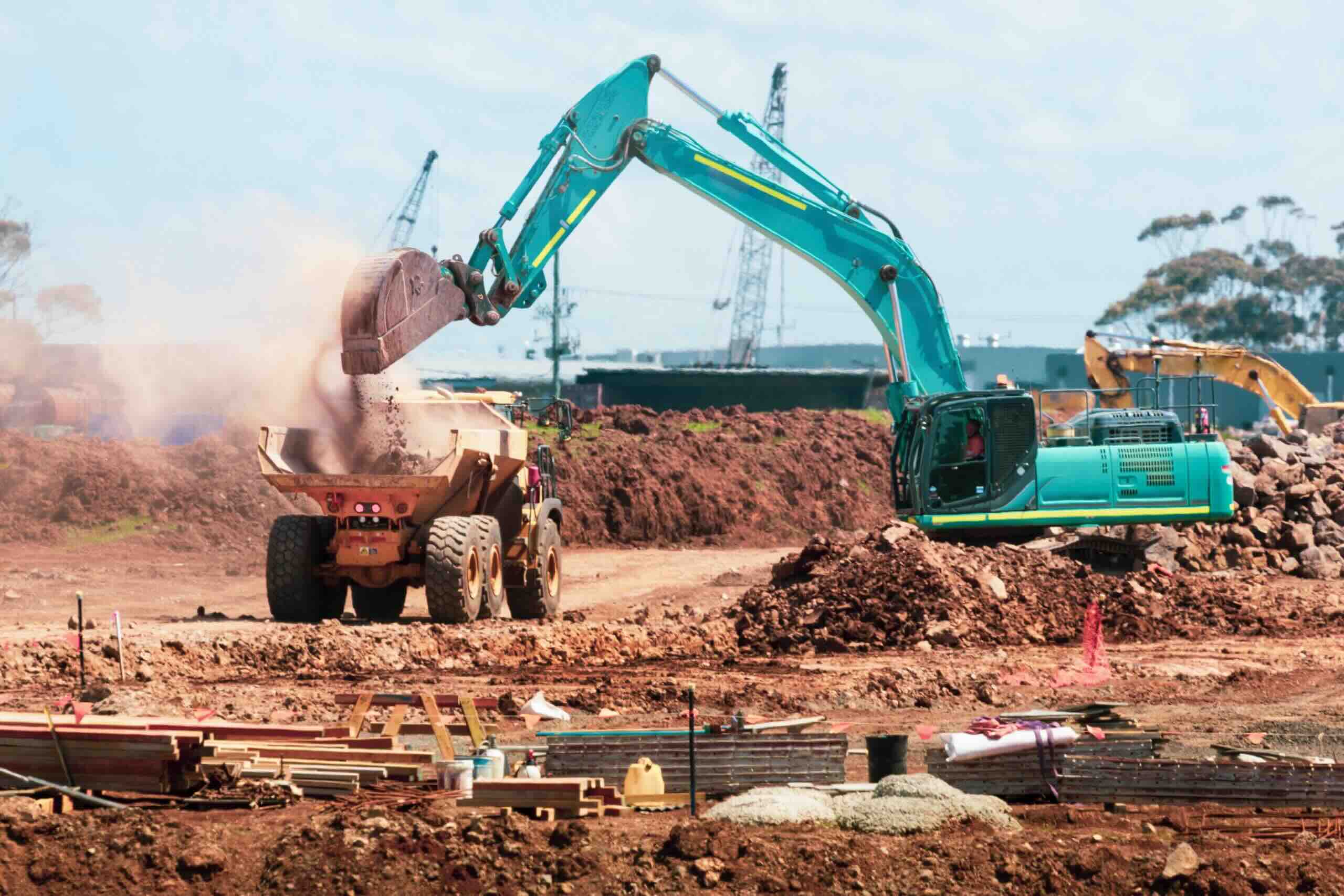Home>diy>Building & Construction>What Is The CIS Construction Industry Scheme


Building & Construction
What Is The CIS Construction Industry Scheme
Modified: September 1, 2024
Learn about the CIS Construction Industry Scheme, an important tax requirement for those in the building-construction sector. Discover how it applies to your business and how to stay compliant.
(Many of the links in this article redirect to a specific reviewed product. Your purchase of these products through affiliate links helps to generate commission for Storables.com, at no extra cost. Learn more)
Introduction
Welcome to the world of construction! If you are new to the industry or just starting a construction project, you may have come across the term “Construction Industry Scheme” or CIS. In this article, we will delve into what the CIS is, who it applies to, and how it functions within the construction sector.
The Construction Industry Scheme, commonly referred to as CIS, is a tax deduction scheme implemented by HM Revenue and Customs (HMRC) in the United Kingdom. The scheme was introduced to regulate tax payments within the construction industry and ensure that contractors and subcontractors comply with their tax obligations.
The primary objective of the CIS is to prevent tax evasion and improve tax compliance in the construction sector. By implementing this scheme, HMRC aims to combat fraud and ensure that individuals and businesses engaged in construction activities fulfill their tax responsibilities.
The Construction Industry Scheme applies to both contractors and subcontractors operating in the construction industry. Contractors are typically businesses or individuals who carry out construction work for clients, while subcontractors are employed by contractors to perform specific tasks or provide specialized services.
It is important to note that not all construction projects fall under the scope of the Construction Industry Scheme. The CIS solely applies to construction work that includes activities such as building, altering, repairing, extending, or demolishing structures. It does not cover ancillary services or projects not directly related to construction.
Before engaging in construction work, contractors must register themselves with HMRC for the CIS. This registration process helps HMRC identify and monitor those involved in the construction sector. Once registered, the contractor receives a unique reference number, which they must provide to subcontractors hired for the project.
Subcontractors, on the other hand, must undergo a verification process to confirm their status as self-employed individuals or limited companies. This verification ensures that subcontractors meet the necessary criteria to work within the CIS, and their payments can be processed accordingly.
Both contractors and subcontractors are required to keep records of their transactions, including any changes in registration or verification status, payments made, and deductions applied for each subcontractor. These records serve as evidence of compliance with the CIS and are subject to audit by HMRC.
In the next sections of this article, we will explore the registration and verification processes in more detail, as well as how deductions and payments are calculated. We will also discuss the importance of compliance with the CIS requirements and the penalties that may be imposed for non-compliance.
Now that we have laid the foundation for our exploration of the CIS, let’s dive deeper into the registration and verification process, which form the building blocks of this tax deduction scheme.
Key Takeaways:
- The Construction Industry Scheme (CIS) is a vital tax deduction scheme in the UK construction industry, ensuring compliance, combating tax evasion, and promoting a level playing field for businesses and individuals.
- Contractors and subcontractors must adhere to CIS requirements, including registration, verification, accurate deductions, and timely reporting, to avoid potential penalties and contribute to the integrity of the construction sector.
Read more: What Type Of Industry Is Construction
Definition of the Construction Industry Scheme (CIS)
The Construction Industry Scheme (CIS) is a tax deduction scheme implemented by HM Revenue and Customs (HMRC) in the United Kingdom to regulate tax payments within the construction industry. It aims to ensure that contractors and subcontractors comply with their tax obligations and prevent tax evasion within the sector.
The primary purpose of the CIS is to improve tax compliance and combat fraud in the construction industry. By operating this scheme, HMRC aims to create a level playing field for all businesses and individuals engaged in construction work, ensuring that they fulfill their tax responsibilities.
The CIS applies to both contractors and subcontractors operating within the construction industry. Contractors are entities that carry out construction work for clients, while subcontractors are hired by contractors to perform specific tasks or provide specialized services.
Contractors must register with HMRC for the CIS before undertaking construction work. The registration process involves providing information about the business entity, the nature of the construction work they carry out, and their contact details. Once registered, the contractor receives a unique reference number to be used for all transactions within the CIS.
Subcontractors working within the CIS must go through a verification process to confirm their status as self-employed individuals or limited companies. This process ensures that subcontractors meet the necessary criteria and have the correct tax treatment applied to their payments under the CIS. The verification process may involve providing details of previous employment, references, or evidence of self-employment.
Once contractors and subcontractors are registered and verified, they become subject to the various obligations and regulations of the CIS. This includes keeping accurate records of payments made and received, submitting monthly returns to HMRC, and deducting the appropriate amount of tax from subcontractor payments.
Within the realm of the CIS, there are important terms and definitions that participants need to familiarize themselves with:
- Construction Operations: This term refers to any work that involves the alteration, repair, extension, demolition, or construction of any building or structure. It also includes the installation of heating, lighting, plumbing, or similar systems within a structure.
- Mainstream Contractors: These are contractors who carry out construction work as the main part of their business or have spent more than £1 million on construction work over a three-year period.
- Deemed Contractors: In some cases, organizations that are not generally involved in construction but spend more than £1 million on construction operations in a three-year period may be classified as deemed contractors and need to operate the CIS.
- Payments: Payments made by a contractor to a subcontractor for construction work fall under the scope of the CIS. These payments are subject to tax deductions made by the contractor before passing them on to the subcontractor.
- Tax Deductions: Contractors are required to deduct a percentage of the payment made to a subcontractor and send it to HMRC as part of the tax obligation. This deduction represents an estimate of the subcontractor’s tax liability.
Understanding these key terms and definitions is essential for contractors and subcontractors operating within the CIS, as they form the basis of compliance with the tax deduction scheme.
Now that we have established the purpose of the CIS, who it applies to, and important terms and definitions within the scheme, let’s dive deeper into the procedures and obligations related to registration and verification within the Construction Industry Scheme.
Registration and Verification
Registration and verification are crucial steps within the Construction Industry Scheme (CIS) that contractors and subcontractors must adhere to in order to comply with the scheme’s requirements. Let’s explore these processes in more detail.
Registering for the CIS
Contractors who plan to undertake construction work must register with HM Revenue and Customs (HMRC) for the CIS. The registration process involves providing essential information about the business, such as the legal name, trading name (if applicable), address, contact details, and Unique Taxpayer Reference (UTR) number. Additionally, contractors need to specify the nature of their construction activities, whether they are a sole trader, partnership, or limited company.
Registration can be done online through the HMRC website, where applicants will need to create a Government Gateway account and complete the necessary forms. Once registered, contractors receive a unique reference number from HMRC that is used for all future interactions and transactions within the CIS.
Verification Process
Subcontractors who work within the CIS must undergo a verification process to confirm their status as self-employed individuals or limited companies. The purpose of this process is to ensure that subcontractors meet the necessary criteria and have the correct tax treatment applied to their payments.
Subcontractors can be verified by providing relevant documentation and information about their employment status, previous employment records, references from clients or contractors, or any evidence that supports their self-employment status. This verification process is carried out by HMRC to validate subcontractors’ eligibility to work within the CIS.
Contractors have the responsibility to ensure that subcontractors they engage with are verified before making any payments. It is essential for contractors to request the unique reference number of the subcontractor and verify it with HMRC either online or through the CIS helpline. Failure to verify subcontractors’ status may result in penalties from HMRC.
Read more: What Is The Future Of Construction Industry
Keeping Records and Reporting Changes
Once registered and verified, both contractors and subcontractors are required to keep accurate records of their transactions and report any changes to HMRC in a timely manner. This includes maintaining records of payments made and received, subcontractor details, and any changes in registration or verification status.
Contractors must ensure that they deduct the correct amount of tax from subcontractor payments and make timely submissions of the monthly CIS returns to HMRC. These returns provide information on payments made to subcontractors and the amount of tax deducted. It is crucial for contractors to accurately report this information, as incorrect or late submissions can lead to penalties from HMRC.
Subcontractors, on the other hand, should keep records of the payments they receive, as well as any deductions made by contractors. This information is important for their own tax calculations and for ensuring compliance with the CIS.
It is essential for both contractors and subcontractors to promptly report any changes in their registration or verification status to HMRC. This includes changes in business details, such as a change in legal name, address, or contact information. Failing to report these changes may result in penalties or delays in receiving payments.
By adhering to the registration and verification processes and maintaining accurate records, contractors and subcontractors can ensure compliance with the CIS and avoid potential penalties. In the next section, we will explore how deductions and payments are calculated within the Construction Industry Scheme.
Deductions and Payments
Within the Construction Industry Scheme (CIS), deductions and payments play a crucial role in ensuring compliance with tax obligations. Let’s delve into how deductions are made, how they are calculated, and the process of submitting payments to HM Revenue and Customs (HMRC).
How Deductions Are Made
Contractors, as part of their obligations under the CIS, are required to deduct a percentage of the payment made to a subcontractor and submit it to HMRC as tax. These deductions are made to account for the subcontractor’s potential tax liability and National Insurance contributions.
When making a payment to a subcontractor, the contractor must determine the appropriate tax deduction rate based on the subcontractor’s verification status. If the subcontractor is registered for the CIS and has provided a valid reference number, the contractor will deduct tax at the appropriate rate specified by HMRC.
It is important to note that if a subcontractor fails to provide a valid reference number, the contractor must apply the higher rate of deductions until verification is completed. Contractors must verify subcontractors with HMRC on a regular basis to ensure the correct deduction rates are being applied.
Calculating Deductions
Calculating deductions within the CIS is based on the gross amount of the payment made to the subcontractor. The exact percentage of deductions is determined by the subcontractor’s verification status and their tax obligations.
For subcontractors who are registered for the CIS and have provided a valid reference number, the deduction rates are as follows:
- Standard rate: 20%
- Higher rate: 30%
- Unverified rate: 30%
The standard rate applies to subcontractors who meet the CIS registration requirements and have been verified by HMRC. However, if a subcontractor fails to provide a valid reference number or their verification is pending, the higher rate or unverified rate is applied.
It is crucial for contractors to calculate deductions accurately to ensure compliance. Deductions should be made on the gross payment amount before any other deductions, such as VAT or materials costs.
Submitting Payments to HMRC
Once deductions are made, contractors are responsible for submitting these payments to HMRC on behalf of the subcontractors. This can be done either electronically through the HMRC portal or by mail using the appropriate forms.
The payments must be accompanied by a CIS monthly return, which provides detailed information on the subcontractors, gross payments made, and deductions applied. Contractors must submit this return to HMRC by the 19th of each month for the previous tax month. For example, the return for payments made in January must be submitted by the 19th of February.
It is essential for contractors to ensure that the correct information is provided in the monthly return to avoid any discrepancies or delays in processing the payments. Timely submission of payments and accurate reporting facilitates compliance with the CIS and helps maintain a good relationship with HMRC.
By understanding how deductions are made, calculating them accurately, and submitting payments in a timely manner, contractors and subcontractors can ensure compliance with their tax obligations under the CIS. In the next section, we will explore the importance of compliance and the potential penalties for non-compliance within the scheme.
Compliance and Penalties
Compliance with the requirements of the Construction Industry Scheme (CIS) is essential for both contractors and subcontractors operating within the construction industry. Failure to comply with the CIS can result in significant penalties imposed by HM Revenue and Customs (HMRC). Let’s explore the importance of compliance and the potential penalties for non-compliance.
Compliance with CIS Requirements
Compliance with the CIS requirements is crucial for contractors and subcontractors to fulfill their tax obligations and maintain a strong reputation in the construction industry. By complying with the CIS, individuals and businesses demonstrate their commitment to operating lawfully and transparently within the sector.
Contractors must ensure that they register for the CIS before undertaking construction work and verify the status of their subcontractors before making any payments. They are responsible for accurately calculating and deducting the appropriate amount of tax from subcontractor payments and submitting the deductions and monthly returns to HMRC on time.
Subcontractors, on the other hand, must provide accurate information during the verification process and maintain records of their transactions. They should ensure that any changes in their verification or registration status are promptly reported to HMRC.
By adhering to these requirements, contractors and subcontractors can avoid potential penalties and build a trustworthy reputation within the construction industry.
Penalties for Non-Compliance
Non-compliance with the CIS can result in severe penalties imposed by HMRC. These penalties aim to ensure that individuals and businesses fulfill their tax obligations and deter fraudulent activities within the construction sector.
The penalties for non-compliance can vary depending on the nature and extent of the non-compliant behavior. Some common penalties include:
- Late filing penalties: Contractors who fail to submit the monthly CIS returns by the due date may face penalties starting from £100 for each monthly return that is filed late. The penalty amount increases the longer the return remains outstanding.
- Late payment penalties: Contractors who fail to submit the required payments to HMRC within the specified timeframe may face penalties starting from 1% of the unpaid amount, increasing over time based on how long the payment remains outstanding.
- Incorrect returns or deductions: HMRC may impose penalties if contractors or subcontractors provide incorrect or misleading information in their CIS returns or fail to deduct the correct amount of tax from subcontractor payments. The penalties can range from fixed amounts to a percentage of the discrepancy.
- Failure to verify subcontractors: Contractors who fail to verify the status of subcontractors before making payments may face penalties for non-compliance. The penalties can be substantial, particularly if a contractor knowingly fails to verify subcontractors to avoid higher deduction rates.
- Obstruction or deliberate non-compliance: HMRC has the authority to impose higher penalties, including criminal charges, for deliberate non-compliance or obstruction of the CIS requirements. These penalties can result in fines, imprisonment, or both.
It is essential for contractors and subcontractors to understand the potential penalties for non-compliance and to strive to meet the requirements of the CIS to avoid these financial and legal consequences.
By ensuring compliance with the CIS and avoiding penalties, contractors and subcontractors can maintain a positive reputation within the construction industry, demonstrate good business practices, and contribute to the overall integrity of the sector.
Now that we have explored the importance of compliance and the potential penalties for non-compliance, let’s move on to discussing the benefits and challenges of the Construction Industry Scheme in the next section.
Read more: What Is Tender In Construction Industry
Benefits and Challenges of the CIS
The Construction Industry Scheme (CIS) brings both benefits and challenges for contractors and subcontractors operating within the construction industry. Understanding these can help individuals and businesses navigate the scheme more effectively. Let’s explore the benefits for contractors and the challenges faced by subcontractors within the CIS.
Benefits for Contractors
The CIS provides several benefits for contractors, including:
- Tax Compliance: The CIS helps contractors fulfill their tax obligations by requiring them to deduct the appropriate amount of tax from subcontractor payments. This reduction in tax evasion and improved compliance ultimately benefits contractors by ensuring they operate within the legal framework.
- Enhanced Reputation: Contractors who comply with the CIS demonstrate their commitment to operating ethically and transparently within the construction industry. This can enhance their reputation and make them more attractive to potential clients and partners.
- Reduced Risk: By adhering to the CIS requirements, contractors mitigate the risk of facing penalties and legal consequences. Compliance reduces the likelihood of audits, investigations, and disputes, helping contractors focus on their projects without the added stress of potential non-compliance.
- Access to Qualified Subcontractors: The CIS enables contractors to engage with qualified subcontractors who have been verified by HMRC. This verification process helps ensure that subcontractors have met the necessary criteria and reduces the risk of working with unauthorized individuals.
Challenges for Subcontractors
While the CIS provides benefits for contractors, subcontractors may face certain challenges, including:
- Higher Deduction Rates: Subcontractors who are not registered for the CIS or fail to provide a valid reference number may face higher deduction rates. This can impact their cash flow and make it more challenging to manage their finances effectively.
- Potential Cash Flow Issues: Due to the deductions made by contractors, subcontractors may face cash flow challenges in managing their business expenses. It is essential for subcontractors to plan and budget accordingly to ensure they have sufficient funds available to cover their costs.
- Complex Verification Process: The verification process within the CIS can be complex, requiring subcontractors to provide extensive documentation and evidence of their employment status. This process can be time-consuming and may pose challenges, particularly for those who are new to the industry or unfamiliar with the requirements.
- Administrative Responsibilities: Subcontractors within the CIS have additional administrative responsibilities, such as keeping records of payments received, deductions made, and changes in their verification status. Managing these responsibilities accurately and efficiently can be demanding for subcontractors.
Despite these challenges, subcontractors can overcome them by understanding the requirements of the CIS, maintaining accurate records, and implementing effective financial management practices.
By recognizing the benefits and challenges of the CIS, contractors and subcontractors can navigate the scheme more effectively, ensuring compliance and reaping the rewards of operating within a regulated and transparent construction industry.
Now that we have explored the benefits and challenges of the CIS, let’s conclude our journey through the Construction Industry Scheme.
Conclusion
The Construction Industry Scheme (CIS) is a tax deduction scheme implemented by HM Revenue and Customs (HMRC) in the United Kingdom. The CIS serves to regulate tax payments within the construction industry, ensuring compliance and combating tax evasion. In this article, we have explored the various aspects of the CIS, including its purpose, who it applies to, and important terms and definitions.
We learned that contractors and subcontractors both have important roles within the CIS. Contractors are responsible for registering with HMRC, verifying subcontractors, making accurate deductions from payments, and submitting payments and monthly returns. Subcontractors, on the other hand, must go through the verification process, maintain records of their transactions, and report any changes in their verification status.
Compliance with the CIS requirements is crucial for both contractors and subcontractors. By complying with the scheme, contractors can improve tax compliance, maintain a strong reputation, reduce risk, and access qualified subcontractors. Subcontractors, though facing challenges such as higher deduction rates and administrative responsibilities, can benefit from a regulated and reputable construction industry.
However, non-compliance with the CIS can lead to penalties imposed by HMRC. Late filing, late payment, incorrect returns or deductions, failure to verify subcontractors, and deliberate non-compliance can all result in financial repercussions. Therefore, it is essential for individuals and businesses involved in the construction industry to adhere to the requirements of the CIS and fulfill their tax obligations.
In conclusion, the Construction Industry Scheme plays a vital role in regulating tax payments within the construction sector. It promotes tax compliance, ensures a level playing field for businesses and individuals, and helps combat tax evasion. By understanding and complying with the CIS, contractors and subcontractors can contribute to the integrity of the construction industry and benefit from a transparent and well-regulated environment.
Now armed with knowledge about the CIS, contractors and subcontractors can navigate the scheme effectively, maintain good compliance, and create successful construction projects. Whether you are about to embark on a construction venture or have been in the industry for years, understanding and adhering to the CIS requirements will ensure a smooth and compliant operation.
Frequently Asked Questions about What Is The CIS Construction Industry Scheme
Was this page helpful?
At Storables.com, we guarantee accurate and reliable information. Our content, validated by Expert Board Contributors, is crafted following stringent Editorial Policies. We're committed to providing you with well-researched, expert-backed insights for all your informational needs.













0 thoughts on “What Is The CIS Construction Industry Scheme”